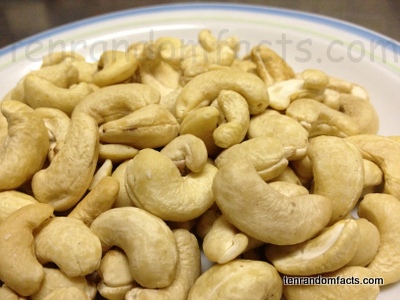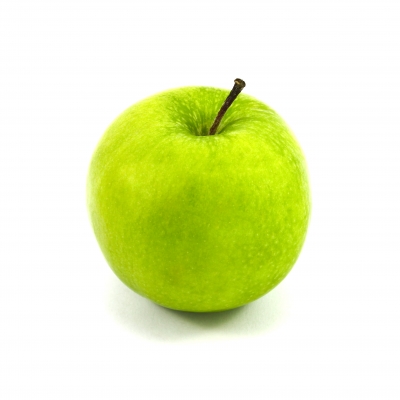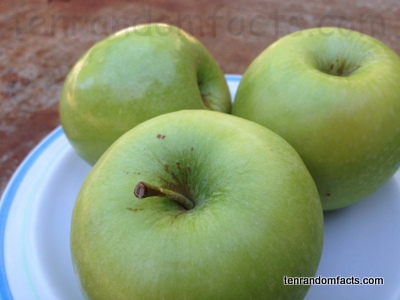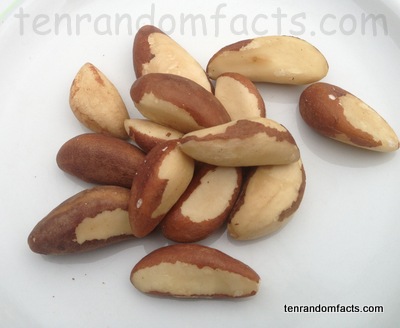
Cashew… tree, apple or nut. NUT!
- Cashew nuts are native to north east Brazil, South America, although they are now grown in many tropical areas around the world.
- Cashew nuts grow on 10-15 m (32-50 feet) evergreen trees known as a cashew tree, from the family Anacardiaceae, which is the family of drupe bearing plants.
- A cashew nut is a seed or kernel, 1.8 – 2.5 cm (0.7 – 1 inch) long, that grows in a kidney shaped fruit called a cashew drupe, which grows at the bottom of an edible accessory fruit called a cashew apple.
- In 2010, Nigeria was the top producer of cashew nuts, producing 650,000 tonnes (717,000 tons).
- Whilst in their shell, cashew nuts are surrounded by a toxic oil or resin similar to urushiol called ‘anacardic acid’, which can burn or irritate the skin, and so they are nearly always treated by roasting, boiling or steaming before they are shelled.
- Some people are allergic to cashew nuts as they are to other tree nuts, due to the proteins in the nuts, however others are allergic to them due to the trace irritants similar to ‘urushiol’, which is in poison ivy pistachios and mangos, all of which are related to cashews.
- Cashew nuts contain many vitamins and minerals, and are a good source of antioxidants and copper, the antioxidants having many great health benefits including decreased likeliness of getting cardiovascular disease.
- The starch content of cashew nuts is approximately 23%, which is significantly higher than most other nuts, and makes them suitable for thickening sauces.
- Cashew nuts are eaten ‘raw’ – these have generally been heat treated, roasted, salted and as a spread; added to main meals like salads, stir-fries and curries in the form of a paste, chopped or used whole; and are also used in desserts and cakes.
- People who have a tendency to get kidney stones or have gallbladder issues may need to avoid or reduce their intake of cashews as they contain oxalates which can make the condition worse.
Bibliography:
Cashew, 2013, Wikipedia, < https://en.wikipedia.org/wiki/Cashew>
Cashews, 2013, The World’s Healthiest Foods, < http://www.whfoods.com/genpage.php?tname=foodspice&dbid=98>
Amazon:














